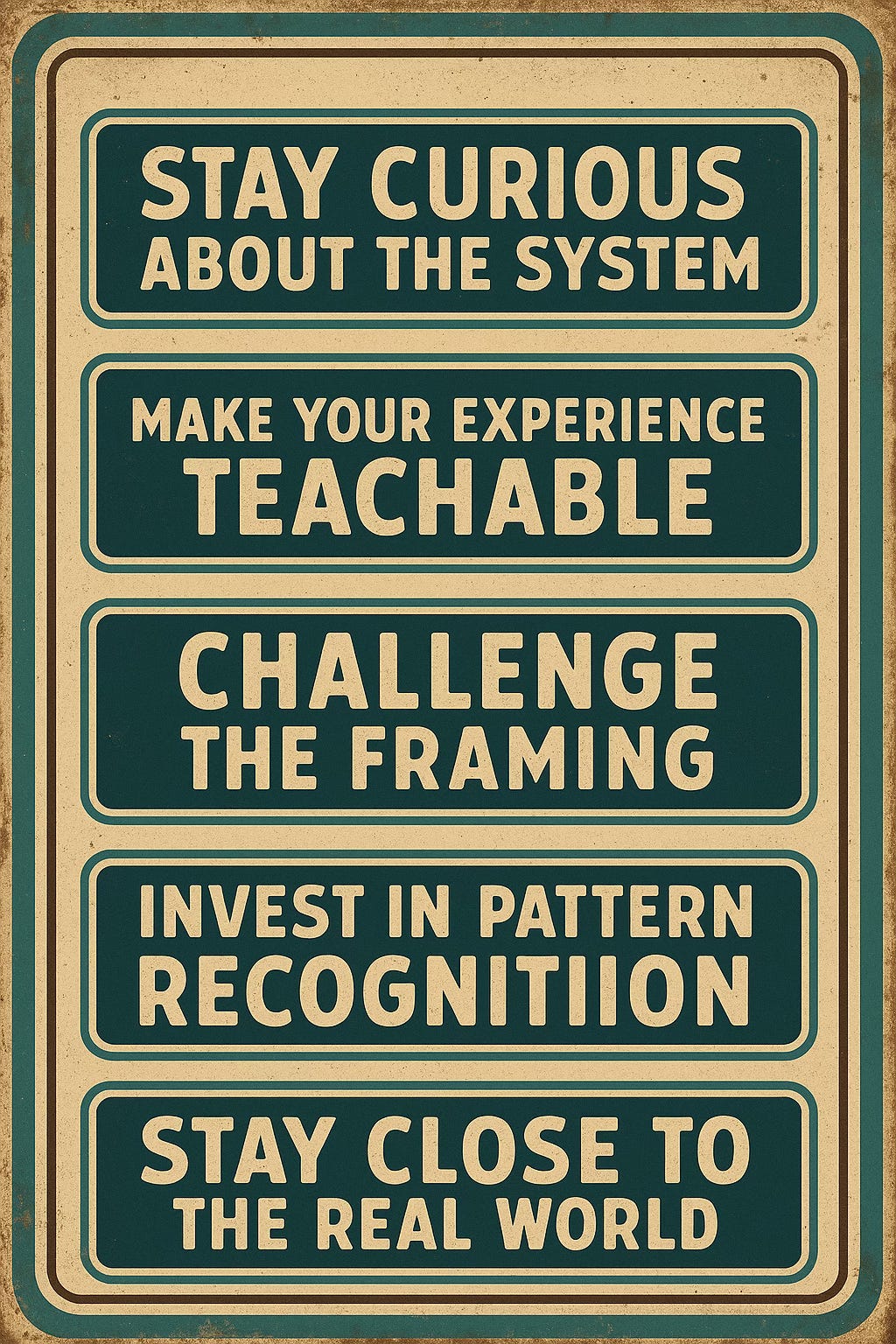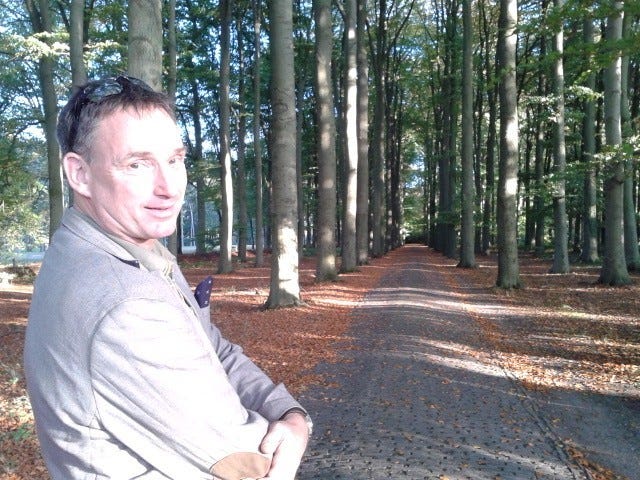A joke, but no joke
There’s an old joke that still does the rounds in some business circles:
A travelling salesman is stranded on a dusty road in the middle of nowhere. His car’s broken down, and he hasn’t got the faintest idea how to fix it. Just when things are looking grim, a cloud of dust appears and an old pickup truck pulls over. Out steps a crusty old mechanic named Larry. He pokes around under the hood, fiddles with a few hoses and wires, and finally takes a hammer from his truck. One sharp tap on the carburettor later, the engine springs to life.
“What do I owe you?” the salesman asks.
“$75,” Larry replies.
“$75!? For tapping the carburettor!?”
“No,” Larry says. “Tapping the carburettor is $5. Knowing where to tap is $70.”
It’s a charming tale—but it holds a deep truth about the value of experience, and it’s one that seems increasingly relevant in today’s workplace.
Automation Everywhere, Expertise Underestimated
As Artificial Intelligence continues to accelerate, there’s a growing temptation to think that most things can be done faster, cheaper, and better by machines. From data analysis and project planning to slide generation and email drafting—AI can already handle a remarkable range of tasks.
And yet, it doesn’t know where to tap.
It can do a lot, but it still relies on human judgment to frame the problem, test a hypothesis, steer direction, and interpret outcomes in context. Just like the salesman could’ve tapped the carburettor all day with no result, AI can generate endless outputs—but only real people know when something really matters.
The Disappearing Middle
What AI is doing most rapidly is eroding the middle. Junior tasks, routine drafting, first-pass research—these are the functions disappearing or being reshaped. That means the space where humans add value is also shifting:
From execution to interpretation
From production to framing
From doing to deciding what to do
The result? The people who thrive will be the ones who know where to tap.
Expertise as Context, Not Just Knowledge
We often treat expertise as knowing more facts. But true expertise is about seeing context and understanding nuance. It’s:
Knowing what not to worry about in a crisis
Sensing the real issue beneath what someone’s saying
Recognising when a dashboard metric looks wrong, even if it’s within limits
Choosing when to pause a project for a stakeholder conversation that isn’t on the plan
AI might read all the manuals. But it hasn’t lived the complexity.
Why People Still Matter
In this changing landscape, human value isn’t disappearing—it’s becoming more concentrated. That creates both opportunity and challenge.
People matter because:
We connect ideas across messy disciplines
We bring ethics and empathy to decision-making
We hold the institutional memory AI can’t access
We can sense timing, politics, culture
We have skin in the game
The challenge? You have to grow that value consciously. You don’t get better at knowing where to tap by accident.
Five Ways to Grow Your Value in an AI World
Stay Curious About the System
Don’t just learn tasks. Learn how things fit together. Ask why, not just how.
Vignette. During a post-mortem on a failed software deployment, a team member pointed out that the issue didn’t lie in the new code but in how it interacted with legacy infrastructure nobody had questioned in years. She had taken the time to map the full architecture, not just her assigned module — and spotted a hidden dependency no one else had flagged.
Make Your Experience Teachable
Narrate your decision-making. Help others (and AI) learn from how you think.
Vignette. A senior logistics manager created a simple visual flowchart based on how she routinely rerouted deliveries during port strikes. What began as a personal hack ended up being adopted globally by other teams facing supply chain disruption — because she’d taken the time to explain why she did things the way she did.
Challenge the Framing
When AI gives you 5 options, ask if those were the right questions in the first place.
Vignette. When asked to use AI to “optimise call centre scripts,” a junior analyst paused and asked why customers were calling in the first place. It turned out the real issue wasn’t scripting — it was a flaw in the onboarding process. The project pivoted to improving first-week experience, reducing calls by 30%.
Invest in Pattern Recognition
Keep notes. Build analogies. See recurring dynamics. That’s where your intuition comes from.
Vignette. One of our consultants kept a private notebook of “project smells” — recurring early signals that a transformation project might derail. After seeing the same red flags across three clients in different sectors, she developed a lightweight diagnostic that our whole company now uses in (pre-sales and project) scoping.
Stay Close to the Real World
Spend time with users, customers, frontline teams. Reality is where insight lives.
Vignette. While a project team debated a new digital HR dashboard, one member spent an afternoon with shift supervisors at one of the client’s production sites. He realised they needed information via WhatsApp, not a browser. That single insight saved months of rework and boosted tool adoption instantly.
Final Thought
The hammer tap is still a useful image. But these days, it’s less about the carburettor and more about the strategic decision, the stakeholder insight, or the judgement call no algorithm can make.
AI will keep getting better. But people who know where to tap? They’ll always be in demand.
“In an age of intelligent machines, human wisdom is knowing not just what to do — but why it matters.”
About the author
I’m Frank Smits, a change and transformation consultant with over 25 years of international experience helping organisations navigate complex business and IT-driven change. I have particular expertise in setting up and managing global HR programmes, including the implementation of HRIS solutions such as SAP SuccessFactors.
I’ve worked with global teams across industries and cultures to deliver major transformations—balancing strategy, execution, and the human side of change. Based in Europe, I work in multiple languages and thrive on making change practical, collaborative, and real.
What I can offer:
I help you shape and manage the engagements to achieve your business outcomes. By bringing in my specialist programme management, change and transformation expertise. From initiation through to implementation. Or any part thereof. This includes leading large-scale business change initiatives, from digital transformation to complex HR programmes.
As executives, you may need a discrete partner to test your ideas. Or get fresh, new ones. I will act as your sparring partner. To having the right conversations. Helping you succeed. This applies to all areas of business leadership—including how to navigate and lead major HR change or transformation initiatives.
Expertise in designing and facilitating innovative and engaging interventions. And, if needed, I can convene a variety of experts from my extensive network (academics, peers, consultants, active retirees) to open up new thinking. In HR programme leadership, this means bringing together key stakeholders—HR, IT, business leaders, and external partners—to drive alignment and engagement.
Sometimes you would like your leaders to get dedicated, customised, specialist education. To enhance your capabilities. To possibly change the conversation. HR leaders facing major change or transformation also need the right tools and perspectives to guide their teams. I can help build that capability.
Find me on LinkedIn: https://www.linkedin.com/in/franksmits




